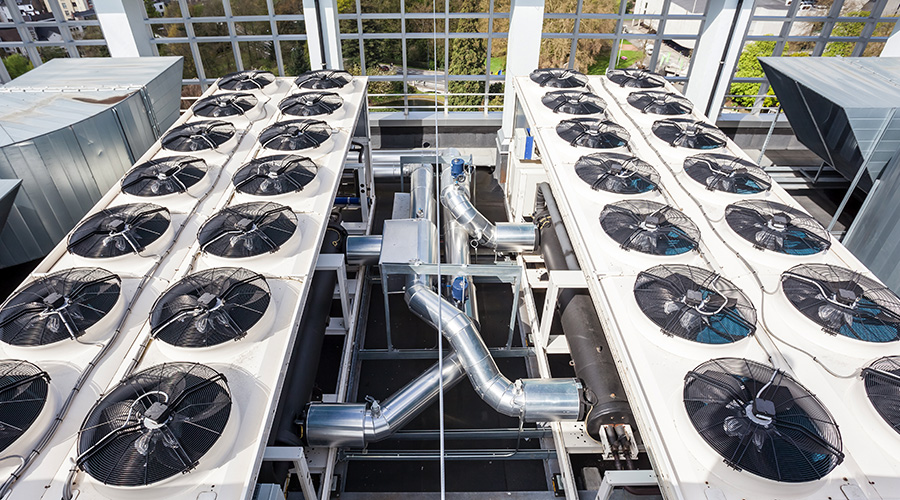Updated ASHRAE Standard Focuses on Carbon Emissions
Updated ASHRAE Standard Focuses on Carbon Emissions - Facility Management Energy Efficiency Quick Read FacilitiesNet


Standard includes carbon emissions performance requirements for existing buildings, as well as emissions targets for dozens of building types

March 20, 2024
Introduction
Demand continues to grow for reduced energy use and carbon emissions in existing institutional and commercial buildings, and facility managers are looking for as much guidance as possible in achieving these goals for their organizations. To meet the demand, the latest version of the national energy efficiency standard for existing buildings offers an expanded focus to incorporate building decarbonization.
ASHRAE Standard 100-2024
ASHRAE Standard 100-2024, Energy and Emissions Building Performance Standard for Existing Buildings provides processes and procedures for reducing energy consumption and carbon emissions through improved energy efficiency and performance of all types of existing buildings, including residential, commercial, institutional, and industrial. The latest edition of the standard includes carbon emissions performance requirements for existing buildings, as well as emissions targets for dozens of building types.
Key Updates
- New metrics provided for establishing greenhouse gas emissions targets, along with continued improvements to energy efficiency and performance in existing buildings.
- Building requirements to: establish an energy management plan incorporating efficient, low-carbon equipment into capital replacement; achieve energy and emissions performance goals; and implement an operations and maintenance program for continued building performance.
- Simple compliance mechanism for energy-efficient and low-emission buildings.
- Energy audit and decarbonization assessment and a separate compliance process for building types that do not have energy or emissions targets.
- Guidance for jurisdictions seeking to develop their own energy consumption and/or greenhouse gas emissions targets.
Dan Hounsell is senior editor for the facilities market. He has more than 30 years of experience writing about facilities maintenance, engineering and management.
SDGs, Targets, and Indicators
| SDGs | Targets | Indicators |
|---|---|---|
| SDG 7: Affordable and Clean Energy | Target 7.3: Double the global rate of improvement in energy efficiency | No specific indicators mentioned in the article |
| SDG 9: Industry, Innovation, and Infrastructure | Target 9.4: Upgrade infrastructure and retrofit industries to make them sustainable | No specific indicators mentioned in the article |
| SDG 11: Sustainable Cities and Communities | Target 11.6: Reduce the adverse per capita environmental impact of cities, including air quality | No specific indicators mentioned in the article |
| SDG 13: Climate Action | Target 13.2: Integrate climate change measures into national policies, strategies, and planning | No specific indicators mentioned in the article |
1. Which SDGs are addressed or connected to the issues highlighted in the article?
- SDG 7: Affordable and Clean Energy
- SDG 9: Industry, Innovation, and Infrastructure
- SDG 11: Sustainable Cities and Communities
- SDG 13: Climate Action
The article discusses the demand for reduced energy use and carbon emissions in existing institutional and commercial buildings. This aligns with the goals of SDG 7, which aims to ensure access to affordable, reliable, sustainable, and modern energy for all. It also relates to SDG 9, which focuses on building resilient infrastructure, promoting inclusive and sustainable industrialization, and fostering innovation. Additionally, the article mentions the importance of reducing the adverse environmental impact of cities, including air quality, which is a target of SDG 11. Finally, the article addresses the need to incorporate building decarbonization to combat climate change, which is a key focus of SDG 13.
2. What specific targets under those SDGs can be identified based on the article’s content?
- Target 7.3: Double the global rate of improvement in energy efficiency
- Target 9.4: Upgrade infrastructure and retrofit industries to make them sustainable
- Target 11.6: Reduce the adverse per capita environmental impact of cities, including air quality
- Target 13.2: Integrate climate change measures into national policies, strategies, and planning
The article emphasizes the importance of improving energy efficiency in existing buildings to reduce carbon emissions. This aligns with Target 7.3 of SDG 7, which aims to double the global rate of improvement in energy efficiency. The article also highlights the need to upgrade infrastructure and retrofit industries to make them sustainable, which corresponds to Target 9.4 of SDG 9. Additionally, the focus on reducing the adverse environmental impact of cities, including air quality, relates to Target 11.6 of SDG 11. Finally, the article emphasizes the integration of climate change measures into policies and planning, which aligns with Target 13.2 of SDG 13.
3. Are there any indicators mentioned or implied in the article that can be used to measure progress towards the identified targets?
No specific indicators are mentioned or implied in the article that can be used to measure progress towards the identified targets.
The article primarily focuses on the introduction of ASHRAE Standard 100-2024, which provides processes and procedures for reducing energy consumption and carbon emissions in existing buildings. While the article mentions the inclusion of carbon emissions performance requirements and emissions targets for various building types, it does not provide specific indicators to measure progress towards these targets.
Behold! This splendid article springs forth from the wellspring of knowledge, shaped by a wondrous proprietary AI technology that delved into a vast ocean of data, illuminating the path towards the Sustainable Development Goals. Remember that all rights are reserved by SDG Investors LLC, empowering us to champion progress together.
Source: facilitiesnet.com

Join us, as fellow seekers of change, on a transformative journey at https://sdgtalks.ai/welcome, where you can become a member and actively contribute to shaping a brighter future.







